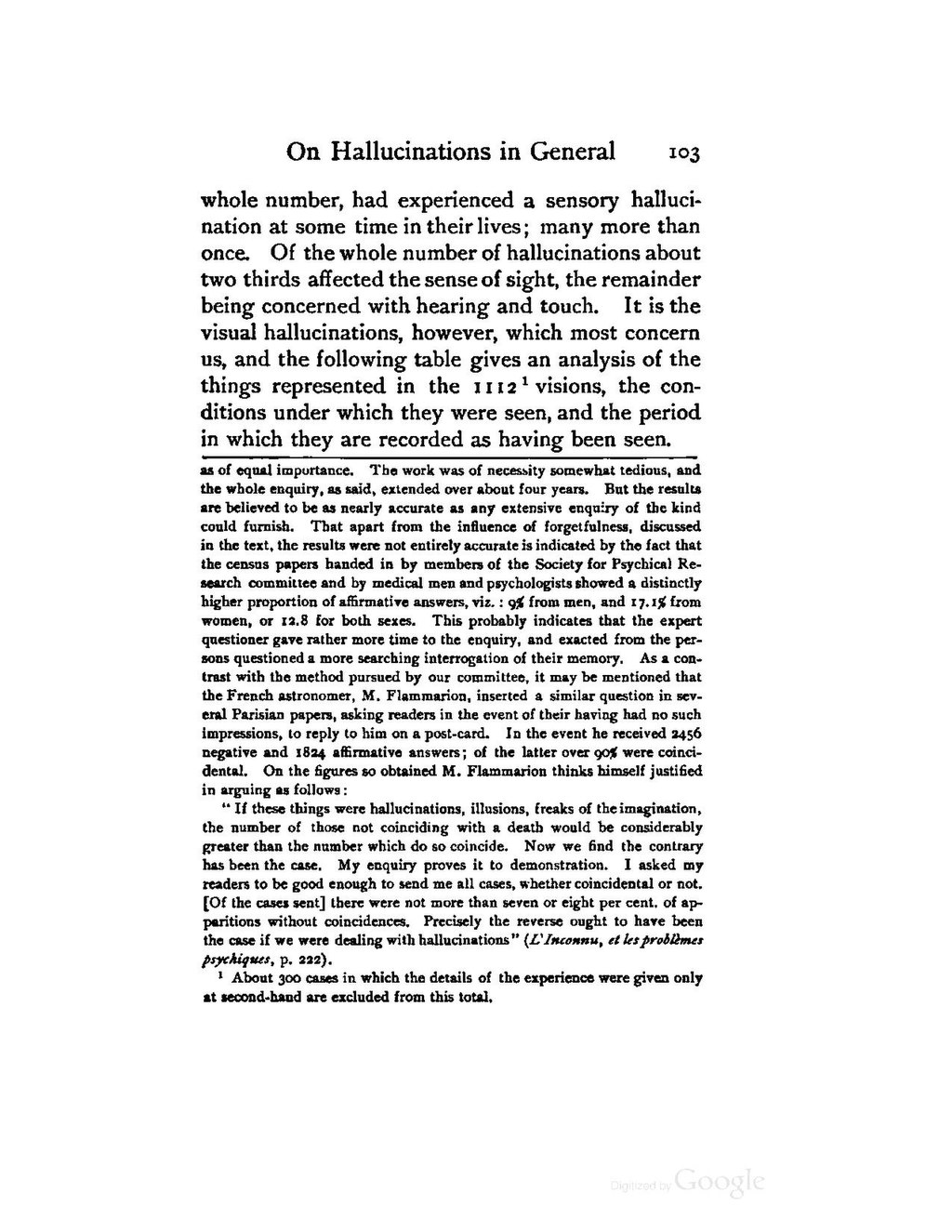whole number, had experienced a sensory hallucination at some time in their lives; many more than once. Of the whole number of hallucinations about two thirds affected the sense of sight, the remainder being concerned with hearing and touch. It is the visual hallucinations, however, which most concern us, and the following table gives an analysis of the things represented in the 1112[1] visions, the conditions under which they were seen, and the period in which they are recorded as having been seen.
- ↑ About 300 cases in which the details of the experience were given only at second-hand are excluded from this total.
as of equal importance. The work was of necessity somewhat tedious, and the whole enquiry, as said, extended over about four years. But the results are believed to be as nearly accurate as any extensive enquiry of the kind could furnish. That apart from the influence of forgetfulness, discussed in the text. the results were not entirely accurate is indicated by the fact that the census papers handed in by members of the Society for Psychical Research committee and by medical men and psychologists showed a distinctly higher proportion of affirmative answers, viz.: 9% from men, and 17.1% from women, or 12.8 for both sexes. This probably indicates that the expert questioner gave rather more time to the enquiry, and exacted from the persons questioned a more searching interrogation of their memory. As a contrast with the method pursued by our committee, it may be mentioned that the French astronomer, M. Flammarion, inserted a similar question in several Parisian papers. asking readers in the event of their having had no such impressions, to reply to him on a post-card. In the event he received 2456 negative and 1824 affirmative answers; of the latter over 901 were coincidental. On the figures so obtained M. Flammarion thinks himself justified in arguing as follows:
"If these things were hallucinations, illusions, freaks of the imagination, the number of those not coinciding with a death would be considerably greater than the number which do so coincide. Now we find the contrary has been the case. My enquiry proves it to demonstration. I asked my readers to be good enough to send me all cases, whether coincidental or not. [Of the cases sent] there were not more than seven or eight per cent, of apparitions without coincidences. Precisely the reverse ought to have been the case if we were dealing with hallucinations" (L'Inconnu, et les problèmes psychiques, p. 222).
